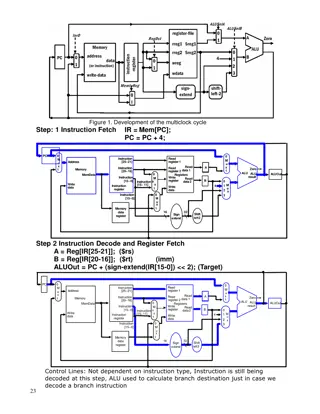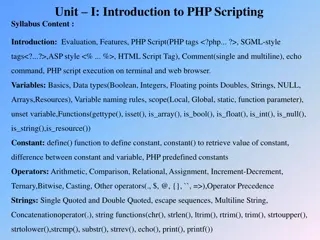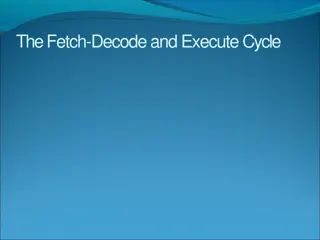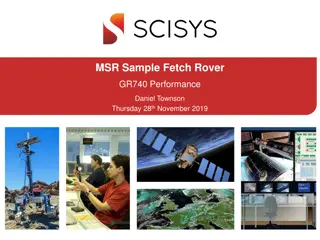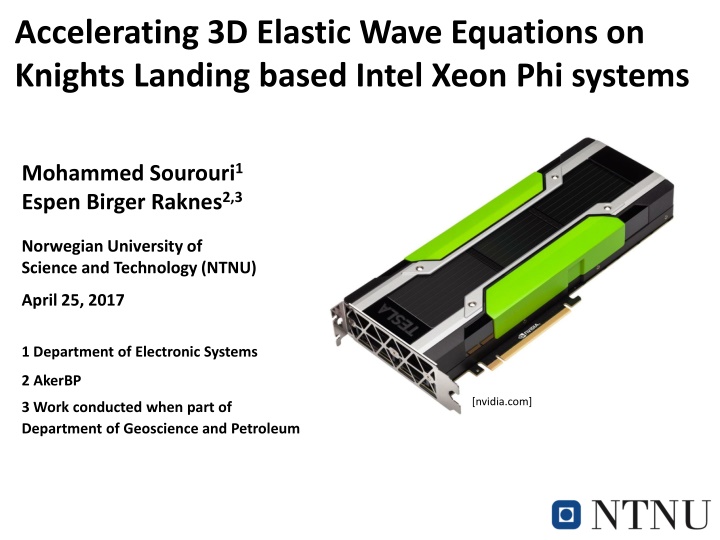
Accelerating 3D Seismic Wave Simulations on Intel Xeon Phi Systems
Explore how the use of KNL-based Xeon Phis accelerates 3D seismic wave simulations. This presentation showcases the results and efficiency of utilizing Xeon Phi architecture for seismic wave modeling and analysis. Learn about the advancements in accelerating 3D elastic wave equations on Knights Landing based Intel Xeon Phi systems.
Download Presentation

Please find below an Image/Link to download the presentation.
The content on the website is provided AS IS for your information and personal use only. It may not be sold, licensed, or shared on other websites without obtaining consent from the author. If you encounter any issues during the download, it is possible that the publisher has removed the file from their server.
You are allowed to download the files provided on this website for personal or commercial use, subject to the condition that they are used lawfully. All files are the property of their respective owners.
The content on the website is provided AS IS for your information and personal use only. It may not be sold, licensed, or shared on other websites without obtaining consent from the author.
E N D
Presentation Transcript
Accelerating 3D Elastic Wave Equations on Knights Landing based Intel Xeon Phi systems Mohammed Sourouri1 Espen Birger Raknes2,3 Norwegian University of Science and Technology (NTNU) April 25, 2017 1 Department of Electronic Systems 2 AkerBP [nvidia.com] 3 Work conducted when part of Department of Geoscience and Petroleum
Accelerating 3D Elastic Wave Equations on Knights Landing based Intel Xeon Phi systems Mohammed Sourouri1 Espen Birger Raknes2,3 Norwegian University of Science and Technology (NTNU) [nvidia.com] April 25, 2017 1 Department of Electronic Systems 2 AkerBP 3 Work conducted when part of Department of Geoscience and Petroleum [opencl.org] [openacc.org]
Accelerating 3D Elastic Wave Equations on Knights Landing based Intel Xeon Phi systems Mohammed Sourouri1 Espen Birger Raknes2,3 Norwegian University of Science and Technology (NTNU) April 25, 2017 1 Department of Electronic Systems 2 AkerBP 3 Work conducted when part of Department of Geoscience and Petroleum [newsroom.intel.com]
Accelerating 3D Elastic Wave Equations on Knights Landing based Intel Xeon Phi systems Tesla P100 Xeon Phi Mohammed Sourouri1 Espen Birger Raknes2,3 FP32 SP 9.3 TFLOP/s 6 TFLOP/s Norwegian University of Science and Technology (NTNU) FP64 DP 4.7 TFLOP/s 3 TFLOP/s April 25, 2017 Memory bandwidth 549 GB/s 475 GB/s 90 GB/s (DDR4) 1 Department of Electronic Systems Memory capacity 16 GB 16 GB 384 GB (DDR4) 2 AkerBP 3 Work conducted when part of Department of Geoscience and Petroleum
This presentation focuses on exploring the use of KNL based Xeon Phis for accelerating 3D Seismic Wave Simulations Xeon Phi Architecture 3D Seismic Wave Simulator Results
This presentation focuses on exploring the use of KNL based Xeon Phis for accelerating 3D Seismic Wave Simulations Xeon Phi Architecture 3D Seismic Wave Simulator Results
This presentation focuses on exploring the use of KNL based Xeon Phis for accelerating 3D Seismic Wave Simulations Xeon Phi Architecture 3D Seismic Wave Simulator Results
This presentation focuses on exploring the use of KNL based Xeon Phis for accelerating 3D Seismic Wave Simulations Xeon Phi Architecture 3D Seismic Wave Simulator Results
Target application: A 3D Seismic Wave Simulator developed from ground-up at NTNU Numerical framework1 3D elastodynamic wave equation Staggered-grid explicit FD 8th order in space 2nd order in time Memory-bound stencil application parallelized using OpenMP 1Espen Birger Raknes, B rge Arntsen, and Wiktor Weibull. 2015. Three- dimensional elastic full waveform inversion using seismic data from the Sleipner area. Geophysical Journal International 202, 3 (2015), 1877 1894. DOI: https://doi.org/10.1093/gji/ggv258
Target application: A 3D Seismic Wave Simulator developed from ground-up at NTNU Sxz dzf3 Vx dxf3 dxf dzb dyb Syz dyf3 dzf2 dxb dyf dzb2 Vy dxb2 dyb2 dzf Vz Sxy dyf2 dxf2 There are in total 25 kernels that needs to be computed for each loop iteration. dxb3 dzb3 dyb3 SxxSyySzz
KNL based Xeon Phi: A cluster on chip Tile Each tile consists of two x86 cores Communication via a 2D mesh interconnect Core Each core has two 512 bit vector processing units (VPUs) Private 32KB L1 cache 1MB shared L2 cache 2D mesh interconnect Memory 8x2GB MCDRAM Up to 384 GB DDR4 memory (three channels)
The memory architecture of KNL based Xeon Phis is user-configurable. Cache mode MCDRAM (CACHE) DDR4 KNL Flat mode MCDRAM (CACHE) KNL DDR4
Baseline Xeon Phi results compared to a highly-tuned multi-core implementation. 1.8x 1.6x 1.3x [olcf.ornl.gov]
By tuning the thread affinity, we can can further increase the performance. 1.99x 1.7x 1.3x [olcf.ornl.gov]
Changing the memory policy (cache->flat) can have a dramatic impact on the performance. 2.33x 1.8x 1.4x [olcf.ornl.gov]
In summary, we have shown that KNL can increase performance compared to multi-core x86 CPUs significantly KNL provides a good blend of ease-of-use and performance If the entire workload fits into MCDRAM, use flat mode, else cache mode is always a safe choice. We have demonstrated that high performance can be achieved with only few steps.






